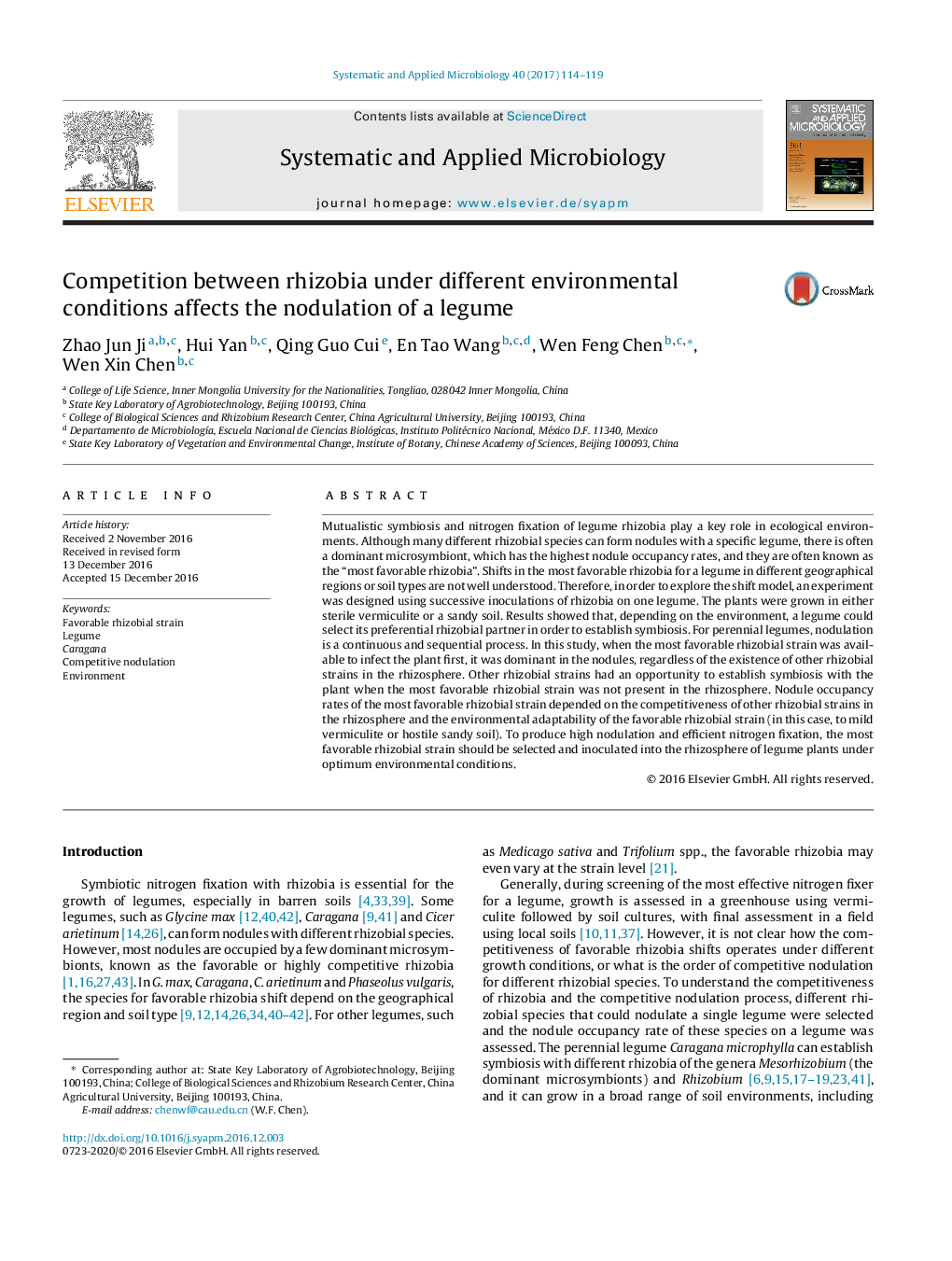| Article ID | Journal | Published Year | Pages | File Type |
|---|---|---|---|---|
| 5519144 | Systematic and Applied Microbiology | 2017 | 6 Pages |
Mutualistic symbiosis and nitrogen fixation of legume rhizobia play a key role in ecological environments. Although many different rhizobial species can form nodules with a specific legume, there is often a dominant microsymbiont, which has the highest nodule occupancy rates, and they are often known as the “most favorable rhizobia”. Shifts in the most favorable rhizobia for a legume in different geographical regions or soil types are not well understood. Therefore, in order to explore the shift model, an experiment was designed using successive inoculations of rhizobia on one legume. The plants were grown in either sterile vermiculite or a sandy soil. Results showed that, depending on the environment, a legume could select its preferential rhizobial partner in order to establish symbiosis. For perennial legumes, nodulation is a continuous and sequential process. In this study, when the most favorable rhizobial strain was available to infect the plant first, it was dominant in the nodules, regardless of the existence of other rhizobial strains in the rhizosphere. Other rhizobial strains had an opportunity to establish symbiosis with the plant when the most favorable rhizobial strain was not present in the rhizosphere. Nodule occupancy rates of the most favorable rhizobial strain depended on the competitiveness of other rhizobial strains in the rhizosphere and the environmental adaptability of the favorable rhizobial strain (in this case, to mild vermiculite or hostile sandy soil). To produce high nodulation and efficient nitrogen fixation, the most favorable rhizobial strain should be selected and inoculated into the rhizosphere of legume plants under optimum environmental conditions.
